|
In the News
Oxford Centre for Soft and Biological Matter Theory and
|
In the News
- Journal of Chemical Physics Editor's Pick and SciLight
Our paper Programming patchy particles to form complex periodic structures was an Editor's Pick and was featured as a SciLight. The paper has also been selected for JCP's 2019 Editors' Choice.
- Journal of Computational Chemistry Cover
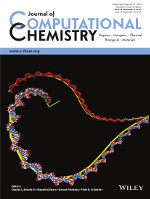
Our paper TacoxDNA: A user‐friendly web server for simulations of complex DNA structures, from single strands to origami has appeared on the Front Cover of the 5 November 2019 issue of Journal of Computational Chemistry.
- Science & Engineering South showcase
The work of the EPSRC-funded project TOUCAN: TOwards an Understanding of CAtalysis on nanoalloys, of which our group is part, has been showcased on the Science & Engineering South website. The article is entitled: Modelling ‘Magic’: the Search for Nanocatalysts.
- Tying Molecular Knots
Our paper Design principles for rapid folding of knotted DNA nanostructures has been featured by a number of news outlets: Science Daily, nanowerk and newswise.
- In Nano
Our paper Direct simulation of the self-assembly of a small DNA origami is one of the articles highlighted in the In Nano section of the February edition of ACS Nano.
- PCCP Cover
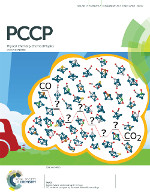
Our paper CO oxidation catalysed by Pd-based bimetallic nanoalloys has appeared on the Inside front cover of the 14 November 2015 Special issue of Physical Chemistry Chemical Physics on Recent advances in the chemical physics of nanoalloys
- Science & Engineering South showcase
Our work on modelling DNA has been showcased on the Science & Engineering South website. The article is entitled: Computing Power Helps Researchers Unlock DNA’s Mysteries. The Tier 2 high-performance computing facilities operated by Science & Engineering South have played a key role in enabling the ambitious nature of our work in this area.
- JCP Cover
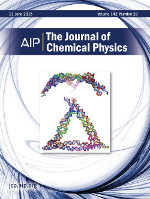
Our paper Introducing improved structural properties and salt dependence into a coarse-grained model of DNA has appeared on the front cover of the 21 June 2015 issue of The Journal of Chemical Physics.
The paper was also one of 2015's most read papers in the Journal of Chemical Physics.
- JCP Cover
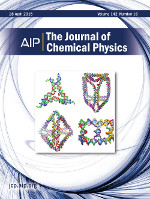
Our paper Characterizing the bending and flexibility induced by bulges in DNA duplexes has appeared on the front cover of the 28 April 2015 issue of The Journal of Chemical Physics.
- Biophysical Journal Cover and blog entry
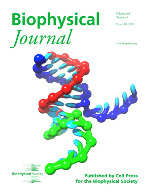
Our paper Modelling toehold-mediated RNA strand displacement has appeared on the front cover of the 10 March 2015 issue of the Biophysical Journal.
The paper has also been highlighted on the Biophysical Society blog.
- JCP Cover
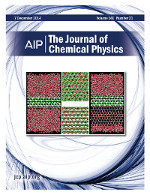
Our paper Heterogeneous ice nucleation on silver-iodide-like surfaces has appeared on the front cover of the 7 December 2014 issue of The Journal of Chemical Physics.
The paper has also been selected for JCP's 2014 Editors' Choice.
- JCP Cover
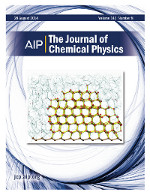
Our paper Effects of surface interactions on heterogeneous ice nucleation for a monatomic water model has appeared on the front cover of the 28 August 2014 issue of The Journal of Chemical Physics.
- JCP Cover
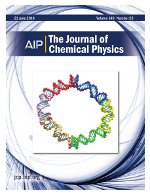
Our paper A nucleotide-level coarse-grained model of RNA has appeared on the front cover of the 21 June 2014 issue of The Journal of Chemical Physics.
It was also one of the most read articles in the Biological Molecules and Networks section of J. Chem. Phys in 2015.
- PCCP Cover and Hot Paper

Our paper Coarse-graining DNA for simulations of DNA nanotechnology has appeared on the inside cover of the 21 December issue of Physical Chemistry Chemical Physics.
It has also been featured on the PCCP blog as one of the hot papers for the week beginning 14 October 2013.
- JCP Editor's Choice for 2012
Our paper The effect of topology on the structure and free energy landscapes of DNA kissing complexes was one of the papers selected as the Editors' Choice for 2012 by the Journal of Chemical Physics.
- Quasicrystal paper most downloaded
A year after it was published, our paper Formation of dodecagonal quasicrystals in two-dimensional systems of patchy particles was in the Top 20 most downloaded JCP articles for March 2013. This feat coincided with the posting of the follow-up paper Computing phase diagrams for a quasicrystal-forming patchy-particle system on arXiv.
- JCP cover
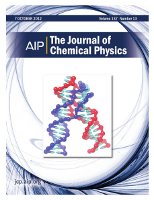
Our article Sequence-dependent thermodynamics of a coarse-grained DNA model is featured on the front cover of the 7 October 2012 issue of The Journal of Chemical Physics.
The paper was in the Top 20 most downloaded JCP articles for October 2012, and in the list of most accessed articles for January to March 2014.
- CUDA Centre of Excellence
NVIDIA has named the University of Oxford a CUDA Centre of Excellence in recognition of its ongoing work in parallel computing research and education using NVIDIA GPUs and the NVIDIA CUDA® parallel programming environment. One of the highlighted areas was our group's use of molecular dynamics simulations to study DNA nanotechnology. For more information see the press releases from NVIDIA and Oxford University, and a further article on the NVIDIA website. - oxDNA
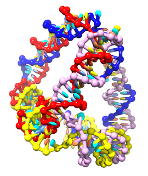
The simulation code that implements our coarse-grained DNA model has been released. This was announced at FNANO12 in April 2012. The website for the code is http://dna.physics.ox.ac.uk.
- Hot article in Soft Matter
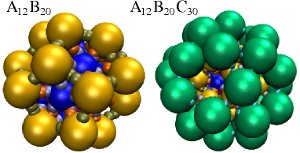
Our article Templated self-assembly of patchy particles in Soft Matter. has been selected as a hot article in the 2 March 2011 entry of the RSC Soft Matter Blog.
- JCP cover
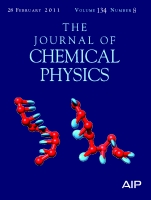
Our article Structural, mechanical and thermodynamic properties of a coarse-grained DNA model is featured on the front cover of the 28 February 2011 issue of The Journal of Chemical Physics.
This paper was also featured as one of the SoftComp network's Scientific Highlights of 2011.
- JPCM cover
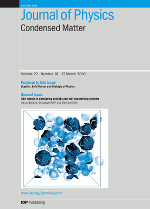
Our article Modelling the self-assembly of virus capsids is featured on the front cover of the 17 March 2010 issue of Journal of Physics: Condensed Matter.
The article was also selected as part of the Highlights of 2010 collection for the journal, and the accompanying brochure.
- DNA blogged
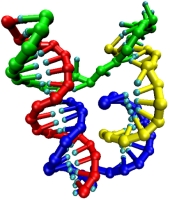
Our recent preprint DNA nanotweezers studied with a coarse-grained model of DNA was recently featured on the Equilibrium Blog
The picture depicts the DNA nanotweezers in their closed form.
- Complex networks citation network
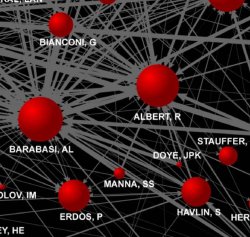
A recent paper by Raddicchi et al. entitled Diffusion of scientific credits and the ranking of scientists (Phys. Rev. E 80, 056103 (2009)) proposes a new way to rank scientists similar to the Google Page ranking system. (See the feature on the APS Physics site.)
The paper included a representation of the scientific citation network for papers published in the Physical Review on complex networks, where only the "top physicists in this field are shown" (Figure 2). There's a small node corresponding to me towards the bottom right.
- JCP cover
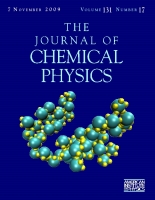
Our article Self-assembly of monodisperse clusters: Dependence on target geometry is featured on the front cover of the 7 November 2009 issue of The Journal of Chemical Physics.
The paper was in the Top 20 most downloaded JCP articles for November 2009.
- PCCP cover
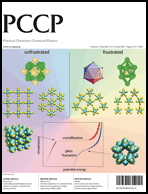
Our invited article for Physical Chemistry Chemical Physics on Controlling Crystallization and its Absence: Proteins, colloids and patchy models is featured on the front cover of the 14 May 2007 issue.
The paper was the most downloaded PCCP article for May 2007.
- Science! on blogue
Our recent article Power-law distributions for the areas of the basins of attraction on a potential energy landscape (Phys. Rev. E 75, 037101 (2007)) was featured on Professor Normand Mousseau's French language science blog: See La revanche de Platon (premiere partie,deuxieme partie).
- Cambridge Templeton Consortium
The Cambridge Templeton Consortium was launched in April 2005. The John Templeton Foundation has made $3 million available to the Consortium to fund research into the emergence of biological complexity at the biochemical, evolutionary and societal levels. Jonathan Doye, along with Ard Louis, is responsible for the 'biochemistry and fine-tuning' program.
- Polytetrahedral clusters
A brief commentary on my paper on polytetrahedral clusters (Phys. Rev. Lett. 86, 5719-5722 (2001)) appeared in the Editor's Choice section of Science (Unconventional Clusters, Science, 292, 2401 (2001))
- Harrison Prize
I recieved the 2000 Harrison Memorial Prize of the Royal Society of Chemistry for my contribution to the statistical mechanics of atomic clusters and polymer crystal growth.
The full citation appeared in Chemistry in Britain, June 2001, p68.
Also featured in Chem@Cam, Autumn 2001
- New Lennard-Jones global minimum
Commentaries on the discovery of a new tetrahedral global minimum for LJ98 (Phys. Rev. E 60, R6320-R6322 (1999)) appeared in:- Optimal paths to atomic clusters, Science News, 156, 255 (1999)
- The Leary tetrahedron: A new approach to global optimization, NPACI & SDSC Online, 3 (Issue 19, Sept. 15 1999).